Mold regrowth is a phenomenon that occurs when the underlying issues causing mold in the first place have not been fully addressed. When mold keeps coming back, it can damage your property and cost a lot to fix. But it's not just about that - it can also make you sick. Breathing in mold for a long time can cause allergies, and trouble with breathing, and in really bad cases, it can even affect your brain or make it harder for your body to fight off sickness. Thus, it is imperative to ensure a mold-free environment to uphold both a safe living space and optimal health.

When you have mold treated in your property, it is a reasonable expectation that it won't come back. If mold does return, here are some of the main reasons.
High humidity can lead to mold regrowth. Excess moisture in the air provides an ideal environment for mold growth, making it particularly difficult to get rid of without addressing the issue of humidity first. To prevent mold from returning, be sure to monitor the humidity levels in your home and take action as needed.
Another common cause of mold regrowth is due to dampness and condensation. Plumbing issues, roof or window leaks, and flooding are all common causes of dampness that must be addressed immediately. Condensation typically forms when warm air meets a cold surface, like window panes or metal pipes. To prevent mold from returning, be sure to repair any water damage and address the source of moisture.
Your best guarantee that mold won't return is to rely on the professional services of a mold remediation company such as FDP Mold Remediation. Don't rely on instructions and advice on the internet, as this could lead to problems like cleaning the surface but not removing all of the underlying moisture, using bleach instead of fungicide, or simply skipping some steps in the process altogether. Without taking the proper measures to remove and prevent mold from returning, it's nearly impossible to keep a space free from regrowth.
Another common factor in mold regrowth is poor ventilation. When air and moisture are trapped inside, areas become more vulnerable to the growth of mold. To properly prevent mold from returning, make sure all areas of the home are well-ventilated. This could include using exhaust fans in bathrooms and kitchens, opening windows regularly to let fresh air circulate, and investing in a dehumidifier to help regulate humidity levels.
To prevent mold regrowth, it is absolutely crucial to maintain impeccable cleaning habits. A clean environment effectively eradicates the food sources necessary for mold to thrive. Be sure to regularly dust, vacuum, and mop all areas
Improper cleaning techniques can also contribute to mold regrowth. If you're not using the correct cleaning products or if you don't clean properly after each use, surface-level mold can spread and eventually lead to mold regrowth. Make sure to dry all surfaces completely after cleaning.
Water leaks and intrusion are frequent causes of mold regrowth. If the leak's origin is not located and fixed, or if an area in your home has been exposed to extensive moisture, such as a flooded basement, it can be challenging to prevent mold from coming back. To prevent mold growth, seal and insulate all parts of your home from water.
With the right preventive measures and approach, you can keep your place free from mold regrowth for an extended period, but in case it is already there you need to be sure it is properly treated. Mold regrowth can be a frustrating problem to tackle, but with the right mold remediation measures done, it's possible to keep your home or business free from expensive and dangerous issues caused by mold. So it is highly advised to seek only professional help from both a physician and a licensed mold removal expert such as FDP mold remediation



